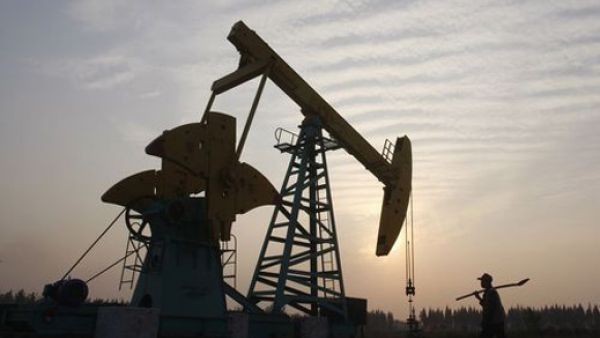The US Energy Information Administration, the statistical arm of the US Department of Energy, last week released an early version of its Annual Energy Outlook 2014 – the AEO2014 Reference case (the complete AEO 2014 is to be released only in September next year only) - underlining in rather bold headlines that the United States will continue to grow less (and less) dependent on foreign oil as tight oil boom adds to supply and more efficient vehicles reduce demand - a double squeeze indeed on the total consumption of the world’s largest energy consumer.
US oil production, which slipped to as low as 5.1 million barrels a day in 2006, topped 8 million in the first week of December. Now crude oil production in the United States is expected to rise faster than projected earlier - to a near historic high by 2016, said the EIA, sharply raising its annual output forecasts further as shale oil development transforms the US energy balance - at a rather breakneck speed. The forecasts show that shale will help oil output in the world’s largest consumer increase by 800,000 barrels a day every year until 2016, when it will total 9.5 million b/d, just below a 1970 record of 9.6 million. However, in contrast to the IEA forecast of considerable downward trend immediately after and OPEC getting back into strides, the EIA projects that the US output will still be above nine million - until at least 2025.
Conceding sharp decline rates at most shale oil wells and maintaining its view from last year that output will peak this decade and then begin to decline, the AEO2014 says the United States would still be pumping 7.5 million b/d in 2040, more than last year’s 6.1 million forecast, yet below the forecasted peak of 9.5 million bpd this decade. This decline is to fuel further the ongoing debate on the long-term shale crude oil prospects. A handful of geologists have been expressing skepticism of the shale output trend and its real impact on world energy balance in the longer run. They have more ammunition now!
The interesting thing to note however is though the US shale oil production is expected to plateau after 2016 and then begin to fall gradually after 2020, its natural gas output will in the meantime, continue to increase steadily, growing 56 percent between 2012 and 2040. The EIA has now raised its forecast of natural gas production, to 31.9 trillion cubic feet (tcf) by 2025 from the 28.7 tcf it had forecast last year, and to 37.6 by 2040 against the 33.2 touted earlier. The 2040 total annual gas production number equates to just over 100 billion cubic feet a day from around 70 bcf/d now.
The US is now also projected to become a net exporter of liquefied natural gas in 2018, two years earlier than forecasted in last year's EIA report, ramping up its LNG exports to 3.5 tcf (or 9 billion cubic feet per day) by 2029, provided indeed that at least three big LNG export facilities eventually get built in the country.
Available fracking technology, its ongoing development and the market prices, however, continue to impact the ongoing shale revolution. “Technology and prices really, really matter when you look at what the likely production numbers for oil and gas are going to be (at any point in time),” EIA administrator Adam Sieminski said while analyzing the report. “It’s not just trying to estimate what the resource level is in the ground.”
Indeed one could not differ with Sieminski. Just a few years ago, US policy makers were overly worried of the risks of an ever-rising dependence on imported fuel. The EIA itself made barely a mention of shale oil in its 2010 outlook, focusing rather on offshore production growth. Now the agency is struggling to get to grips with a complete reversal of that equation. The government has begun approving more natural gas exports and may consider lifting a ban on crude oil exports.
While going through the energy projections and forecasts, one has to understand that the global energy equation is complex. Uncertainties abound. In preparing the above report, the EIA too evaluated a wide range of trends and issues that could have major implications for US energy markets. Yet, with uncertainties inherent in any energy market projections, variations in key assumptions indeed can lead to completely different outlooks for the energy markets, IEA too concedes in rather plain terms. Indeed one needs to look at all the projections - in that perspective – if not with a pinch of salt!
Sieminski said the US government may want to consider oil swaps with Mexico, if not a total elimination of constraints. “They might want to look at the possibility of whether it would make some sense to allow the light sweet crude to go to refineries in Mexico that need that oil and have more sour crude coming from Mexico,” he said. “That does require a policy decision but you can see that the trends are pushing things in that direction.”
And what would be the impact of shale development on market prices and crude oil producers? A difficult nut to crack, indeed!
Softening markets appear a net consequence. EIA projects that the higher US production will help tamp down global benchmark Brent crude oil prices, which are now expected to fall to $92 (US) a barrel in 2012 prices in 2017, before rising to $141 in 2040. Last year the EIA saw a fall to $96 in 2015.
Shale would definitely impact oil producers too – one can’t deny. OPEC is keeping a tab on the emerging trend. Only last month it conceded it may lose 8 percent of its market share to shale over the next five years.
The EIA too underlined in AEO2014 that OPEC’s world crude oil market share would fall to below 40 per cent (from 40-45 percent forecasted only last year) in the near term but then recover after 2016.
The impending shale revolution is changing the global energy map. The US use of imported energy is now seen falling from 16 percent of total consumption in 2012 to 4 percent in 2040. Helping the fall in foreign energy dependence is declining gasoline consumption too, as US drivers today use more fuel-efficient cars, including hybrids, and drive less. An important part of that gain will be a 25 percent fall in fuel used by motorists, despite a modest growth in the total distance traveled. And over the same period the share of fossil fuels in the US energy mix will fall to 80 percent from 82 percent.
The AEO2014 also identified some key shifts already taking place in the US energy industry. The generous supply and lower prices of natural gas will allow it to overtake coal as the leading fuel for power generation. In 2040, gas will comprise 35 percent of electricity generation, while coal will be 32 percent. The rise of cheap gas will also enhance the development of gas-intensive industries, like chemicals and metal-based durable goods.
Despite that, for the economy overall, energy use per dollar of production will fall by 43 percent between 2012 and 2040, as the economy's less energy-intensive services sector grows.
We are in the midst of a virtual energy revolution – who can dare deny?

Now crude oil production in the United States is expected to rise faster than projected earlier - to a near historic high by 2016.







